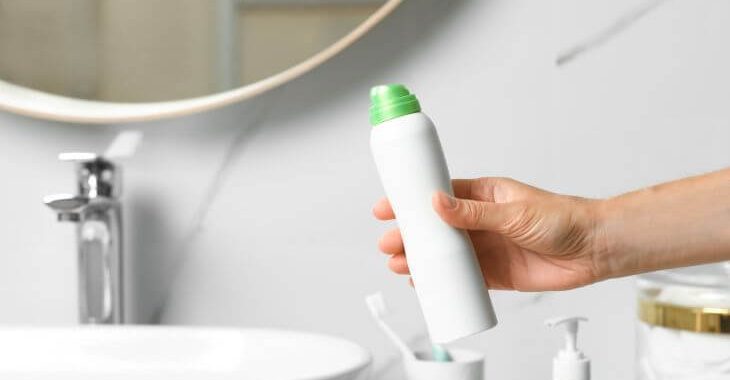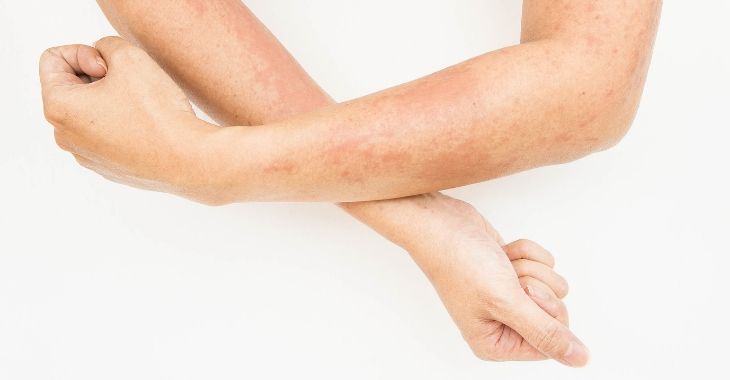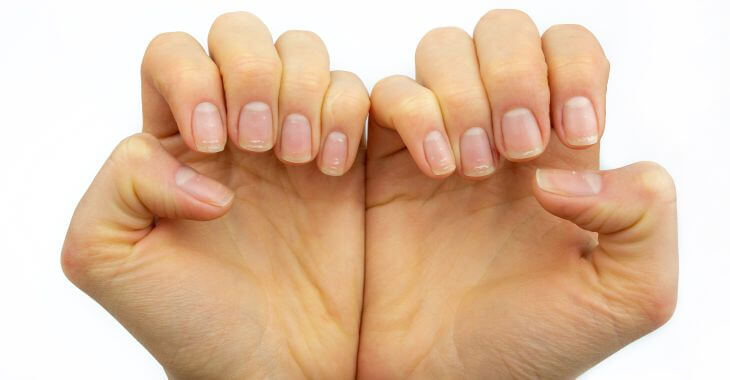Bromhidrosis: Definition of Unpleasant Body Odor

Sweating is a natural body process to cool the skin and release toxins. While many people associate sweating or perspiration with body odor, sweat often does not have a scent. It is only when it mixes with skin and bacteria that most sweat can create an unpleasant odor. When a person has chronic body odor, they may have a condition called bromhidrosis. Here is a brief bromhidrosis definition and some facts about this health condition.
What Is Bromhidrosis?
Anyone and everyone can experience body odor from sweating. If you sweat and do not wear deodorant or take a shower, you will likely begin to experience body odor. This is a normal reaction when sweat, skin and bacteria combine, but it can be quickly remedied with performing normal hygiene like taking a shower or bath. Bromhidrosis is a condition where unpleasant body odor is prevalent, even with good hygiene, deodorants and other measures to keep it at bay. Those with bromhidrosis may have a pungent body odor even after taking a shower or applying deodorant due to a chemical reaction that occurs when sweat is released on their skin.
The bromhidrosis definition and diagnosis are the same: unpleasant body odor. But there are many different causes, symptoms and treatments for this condition. Knowing the type of bromhidrosis and cause of the odor are important to determine the best treatment and prevention methods.
Bromhidrosis: Definition of the Two Types
There are different types of bromhidrosis and each presents different odors and issues. While both are caused by the mixture of excreted sweat with skin and bacteria, the odor and effects may be slightly different. Here are brief bromhidrosis definitions for the two main types:
- Apocrine Bromhidrosis
- The most common type of bromhidrosis is apocrine. Individuals with this type of apocrine have lipid-rich apocrine sweat that causes a pungent odor when it combines with skin and bacteria. The odor is acidic, similar to the smell of onions or sulfur.
- Eccrine Bromhidrosis
- While less common, eccrine bromhidrosis causes a change in the keratin in the skin. The sweat softens the keratin, which leads to quicker breakdown of bacteria that cause odor. Those who have eccrine bromhidrosis may have a more earthy stench.
Neither apocrine or eccrine sweat has an odor. The odor occurs due to the breakdown of the sweat and skin debris by yeasts and bacteria.
Causes of Bromhidrosis
Anyone can have or acquire bromhidrosis due to a combination of different factors. For some, it is a genetic condition that comes with their DNA. The same gene markers that may result in wet or sticky ear wax can contribute to apocrine bromhidrosis. However, there are many biological, environmental and lifestyle factors that can cause bromhidrosis, especially eccrine bromhidrosis. Some of these include:
- Foods — Certain foods can contribute to bromhidrosis, including onions, garlic, red meat, curry, fish and cruciferous vegetables.
- Alcohol and tobacco
- Obesity — Excess folds of skin can create havens for bacteria, yeast and sweat.
- Skin conditions — Some skin problems are caused by bacteria like intertrigo and erythrasma.
- Hyperhidrosis — Excess sweating or hyperhidrosis can complicate bromhidrosis by adding more sweat to the equation.
- Penicillin
For those with bromhidrosis, there may be a combination of factors that contribute to their condition. The cause may be genetic or biological, but there can be lifestyle or environmental factors that may make their condition worse.

Treatments for Bromhidrosis
The bromhidrosis definition is unpleasant body odor, but the solution is not as simple. Those with bromhidrosis may have excellent hygiene habits, showering one or more times per day and using appropriate products to curb body odor. However, soap, water and deodorants are often not enough to stop bromhidrosis odor for long, or sometimes at all. Some of the treatments used to control bromhidrosis include:
- Body hair removal – Body hair can trap bacteria. Removing excess body hair through shaving, waxing or permanent laser treatments can be beneficial.
- Diet changes – Limiting foods and beverages that contribute to bromhidrosis can be helpful as part of the treatment plan. Also, adding odor-fighting foods like citrus fruits and leafy vegetables can be useful.
- Specialized soaps and deodorants – Antibacterial soaps and specialized body washes can help control bacteria – there are also prescription deodorants that are more powerful than over-the-counter products.
- Sweat gland removal – There are treatments to disable the function of sweat glands or actual removal to treat hyperhidrosis and bromhidrosis.
- Medications – Antibiotics and topical medications may be prescribed to help control bromhidrosis.
Bromhidrosis can be an embarrassing condition that can impact social and professional interactions and self-confidence. Those who suffer from this condition can find relief with the right treatment. To learn more about bromhidrosis, it’s definition, diagnosis and the treatment options, visit a dermatologist or physician.
The information provided on this website, including text, graphics, images, and other materials, is intended solely for informational purposes and should not be used as a substitute for professional medical advice, diagnosis, or treatment.



)